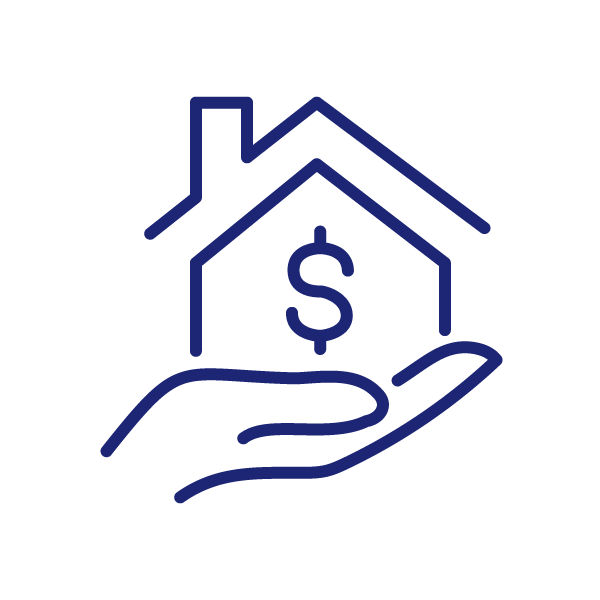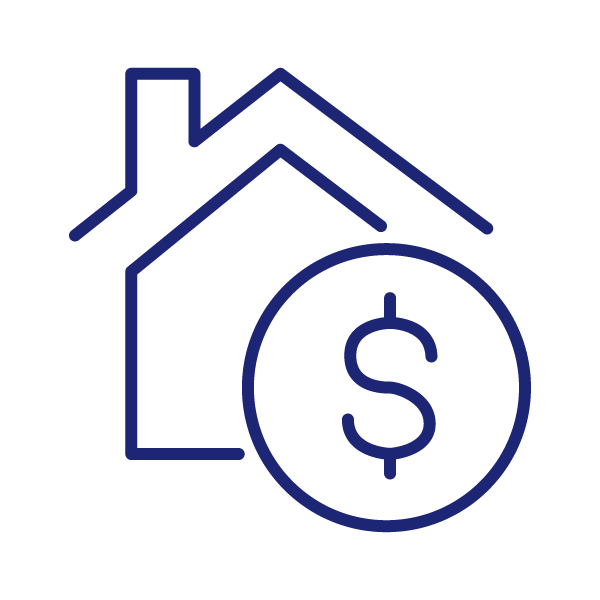Mortgages can be a mystifying topic for many Canadians, and there are plenty of misconceptions out there. These mortgage myths can cause confusion and may even deter potential buyers from pursuing their homeownership dreams. Here, we debunk five common mortgage myths, offering clarity and confidence to anyone thinking about buying a home.
Mortgage Myth #1: You need a 20% down payment |
Mortgage Myth #1: You need a 20% down paymentWhile it’s true that putting down at least 20% of a home’s purchase price gets you what’s called a “conventional” mortgage, this is not the only option for homeowners in Canada. In fact, homebuyers can put down as little as 5% of the purchase price in some cases. Here’s a breakdown of the down payment rules in Canada:
Keep in mind, if your down payment is less than 20%, your mortgage is considered “high-ratio” and requires mortgage loan insurance. This insurance protects lenders in case a homeowner defaults on their payments. Mortgage insurance (also called default insurance) is provided by Canada Mortgage and Housing Corporation (CMHC). The cost of this insurance ranges from 0.6% to 4.0% of your total mortgage, depending on your down payment. It can be paid upfront or added to your regular mortgage payment. See Saving for a Down Payment for more information about how much you need to put down and tips for saving up. |
|||||||||||
Mortgage Myth #2: Adjustable Rate Mortgages are too risky |
Mortgage Myth #2: Adjustable Rate Mortgages are too riskyFirst things first. What is an adjustable rate mortgage? Also called an ARM, an adjustable rate mortgage has a variable interest rate where both the mortgage rate and the payment amounts go up or down with the rise and fall of interest rates. The portion of your payment going toward the principal remains consistent, but the amount going to interest can change. ARMs have a reputation for being risky because they’re less predictable than fixed-rate mortgages. But here are some facts to consider:
While there is some unpredictability with ARMs, there isn’t the level of risk many assume. |
|||||||||||
Mortgage Myth #3: Getting a mortgage from your primary bank is the best option |
Mortgage Myth #3: Getting a mortgage from your primary bank is the best optionWhile your bank may offer a range of mortgage products, they’re limited to their own lineup. When you work with a mortgage broker, on the other hand, you have access to a wide range of mortgage products across several lenders. This is because a mortgage broker has relationships with many different banks, credit unions, and mortgage financing companies and can present you with the options that best meet your needs. This makes comparison shopping easy! What’s more, there are many steps involved in getting a mortgage, and various options, terms and terminology to consider. Having the right support and expertise is crucial to navigating through it all. Here is where a mortgage broker can provide even more value. As experts in the mortgage industry, they have in-depth knowledge of Canadian mortgage products, processes and features, and can guide you from start to finish. Not only will they help to match you with the right mortgage, but a licensed mortgage broker will also make sure you don’t miss a step – handling the paperwork, negotiations and pre-approvals on your behalf. |
|||||||||||
Mortgage Myth #4: The mortgage covers all costs associated with buying a home |
Mortgage Myth #4: The mortgage covers all costs associated with buying a homeWhen new and prospective buyers are budgeting for their home purchase, many focus solely on the purchase price of the home and the cost of the mortgage payment. The reality, however, is that your mortgage payment isn’t the only cost involved in buying and owning a home. There are closing costs and carrying costs to consider. Closing costs are one-time fees that are over and above the purchase price of your home. These might include land transfer tax, legal fees and disbursements, title insurance, property tax adjustments and sales tax on mortgage insurance. While the amount you’ll need to pay in closing costs depends on a few factors, a general guideline is to set aside 3% - 4% of the purchase price to cover closing costs. But don’t worry – your real estate lawyer will outline all the costs for you, so you don’t need to do any calculations yourself. Carrying costs, meanwhile, are the ongoing expenses that come with owning a home. These include property taxes, utilities, home maintenance, waste management, repairs and in some cases, condo fees. Our Home Buyer Checklist outlines the typical expenses homeowners are responsible for before, during and after a home purchase. |
|||||||||||
Mortgage Myth #5: A deposit and a down payment are the same thing |
Mortgage Myth #5: A deposit and a down payment are the same thingWhile both a deposit and a down payment are important parts of the home buying process, they are not the same. The deposit is the amount of money you provide upfront when your offer is accepted—essentially a gesture of good faith that shows the seller that you’re serious. This money is held in trust (usually by the seller’s brokerage or lawyer) and is later applied toward your down payment. The down payment, meanwhile, is the total amount you contribute toward the purchase of the home (i.e., the portion not covered by your mortgage). So, while your deposit makes up part of your down payment, it doesn’t replace it.
For example, if you’re buying a home for $800,000 and planning to put down 10% ($80,000), your deposit of $20,000 would go toward that total, leaving $60,000 to provide at closing. Navigating the world of mortgages doesn’t have to be overwhelming. By separating fact from fiction, you can feel more confident and prepared as you move toward homeownership. Whether you’re buying your first home or your fifth, understanding the process – and the common myths – can help you make informed decisions. Have questions? A mortgage broker can give you all the facts and guidance you need to buy a home with confidence. |
* MCAP homeowners have the option to convert their mortgage to MCAP’s current fixed rates at any time without penalty (providing their new mortgage term is at least five years).




